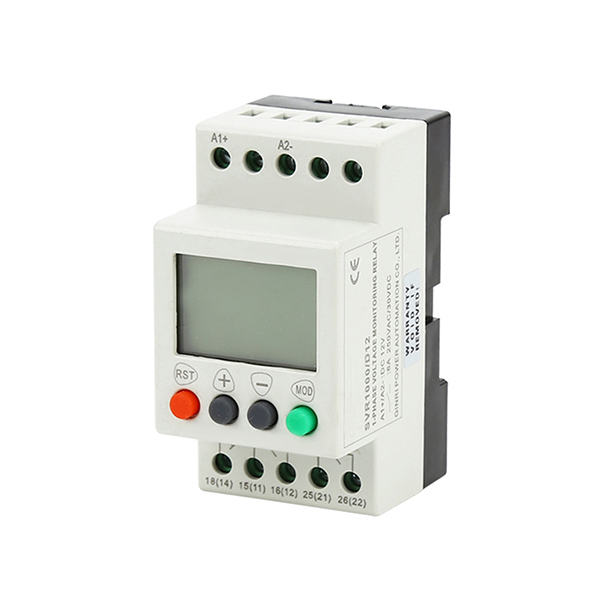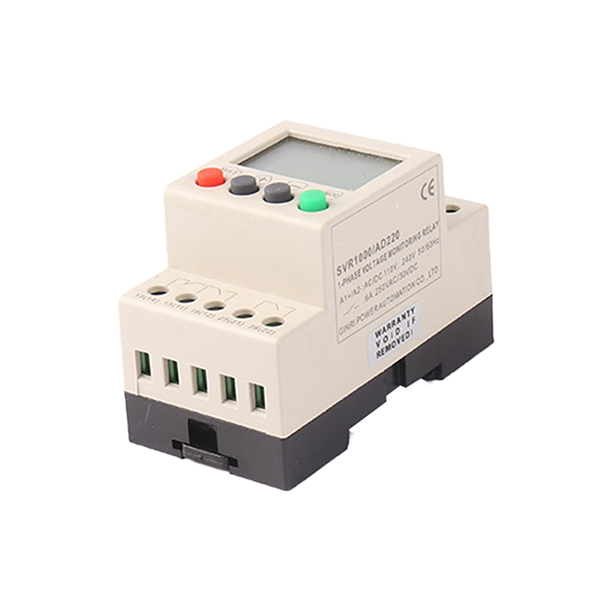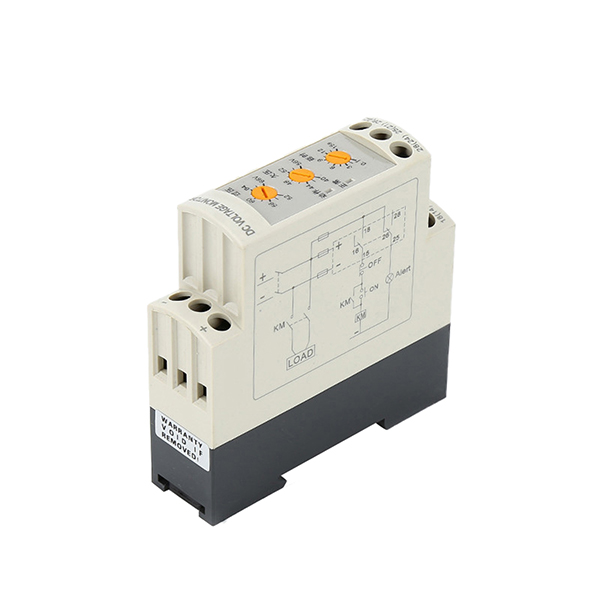SPDT DIN Rail Mount Phase Failure Relay
ATO DIN rail mount phase failure relay with SPDT (1 C/O) contact, performs the monitoring functions including phase loss, phase sequence, phase unbalance, overvoltage and undervoltage in the 3 phase AC power system of 220V AC, 380V AC, 440V AC, 460V AC, or 480V AC 50/60Hz. The 3 phase voltage monitoring relay provides a safe protection for air compressors, electric motors, pumps, fans, air-conditioning system, blowers, lifts, elevators, cranes, refrigeration units, mining excavators and conveyors.
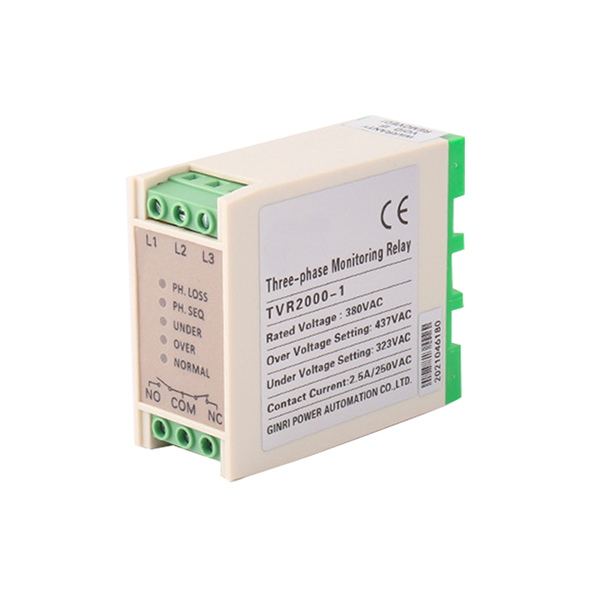
Features:
- Compact size in DIN rail mounting.
- Three-phase monitoring of phase sequence, phase loss (phase failure), phase unbalance, overvoltage and undervoltage.
- Powered by the measuring circuit. Monitoring relays are able to do this.
- Monitoring relay with 1 C/O (SPDT) contacts.
- 5 LED lights for status indication.
Specification:
| Model | ATO-JVR | |||
| Measuring Circuit | 3-Phase AC: L1, L2, L3 | |||
| Monitoring Functions | Phase Sequence (Reversal), Phase Loss (Failure), Phase Unbalance | |||
| Overvolatege, Undervoltage | ||||
| Rated Voltage (line voltage) (Optional) | 220V AC, 380V AC, 440V AC, 460V AC, 480V AC 50/60Hz | |||
| Voltage Setting Range (Optional) | Model Suffix | Undervoltage | Overvolatege | |
| Blank | -15% | 15% | ||
| A | -10% | 10% | ||
| B | -10% | 12.50% | ||
| C | -12.50% | 15% | ||
| Voltage Unbalance Threshold | 15% fixed | |||
| Delay Time for Undervoltage & Overvoltage | 5-8s fixed | |||
| Delay Time for Phase Loss, Phase Unbalance, Phase Sequence | 1-2s fixed | |||
| Reset Time | 0.5s fixed | |||
| Indicator | LED indicating phase sequence, phase loss, overvolatege, undervoltage, and normal status | |||
| Output Contacts | 1 C/O (SPDT or 1 Form C) | |||
| Contact Capacity | 3A, 250V AC (resistive load) | |||
| Degree of Protection | IP 20 | |||
| Working Conditions | Operating Temperature | -25℃~65℃ | ||
| Humidity | ≤85%RH, non-condensing | |||
| Mechanical Durability | 1,000,000 cycles | |||
| Dielectric Strength | >2kVAC 1min | |||
| Mounting | 35mm DIN rail | |||
| Weight | 110g | |||
| Dimensions (H*W*D) | 68*30*76mm | |||
| Certification | CE | |||
Wiring Diagram:
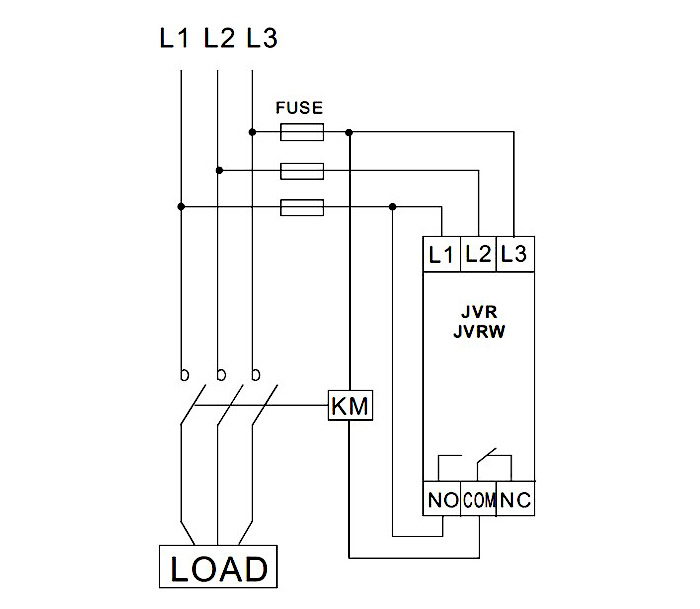
Dimension: (Unit: mm)
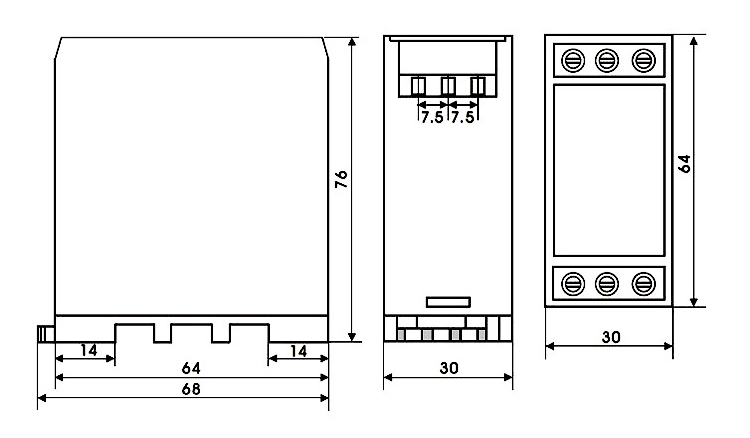
- The parameters of the phase sequence relay are unstable. A considerable part of the components of the electromagnetic phase sequence relay are riveted and matched, and the main problem is that the riveting is loose or the bonding strength is poor. This kind of fault will make the parameters of the phase sequence relay unstable, the parameters change greatly under high and low temperature, and the resistance to mechanical vibration and impact is poor. The main reasons for this problem are that the riveted parts are out of tolerance, the parts are improperly placed, the quality of the tool is unqualified or the installation is inaccurate. Therefore, before riveting and welding, it is necessary to carefully check whether the tool and the riveted parts meet the requirements.
- Deformation of the riveting parts of the electromagnetic system. After riveting, the parts are bent, skewed, and the pier is thick and black, which will cause difficulties in the assembly or adjustment of the next process, and even cause scrap. The main reasons for this problem are that the riveted parts are too long, too short or the force is uneven when riveting, the assembly deviation of the mold or the wrong design size, and the improper placement of the parts. When riveting, the operator should first check the size and shape of the parts and whether the tool is accurate. If the tool is not installed in place, it will affect the assembly quality of the electromagnetic system or the deformation of the core and the thickness of the pier.
- Damage to glass insulators. Glass insulators are made of metal pins and glass sintered. During inspection, assembly, adjustment, transportation, and cleaning, the pins are prone to bend, and the glass insulators fall off blocks and crack, resulting in air leakage and time. The insulation and withstand voltage performance will be reduced, and the rotation of the pin will also cause the contact reed to shift, which will affect the reliable on-off of the product. This requires the operator of the assembly to handle the phase sequence relay with care, and the parts should be neatly arranged in the transfer box. During assembly or adjustment, it is not allowed to pull or twist the lead-out pins.

